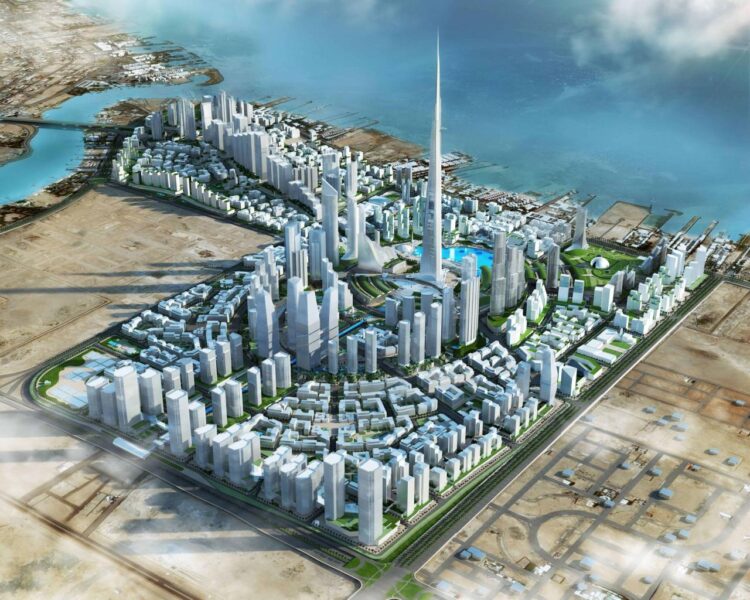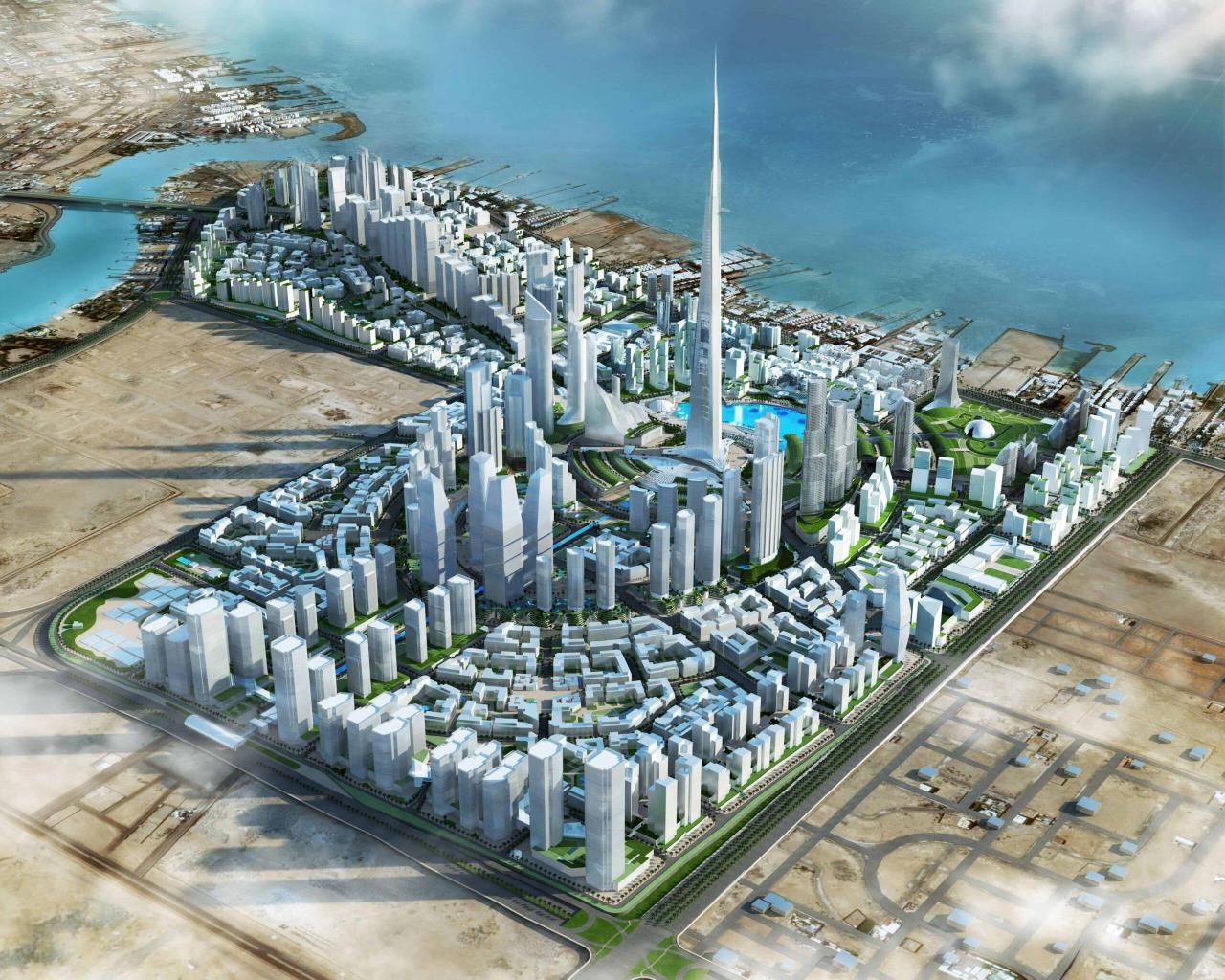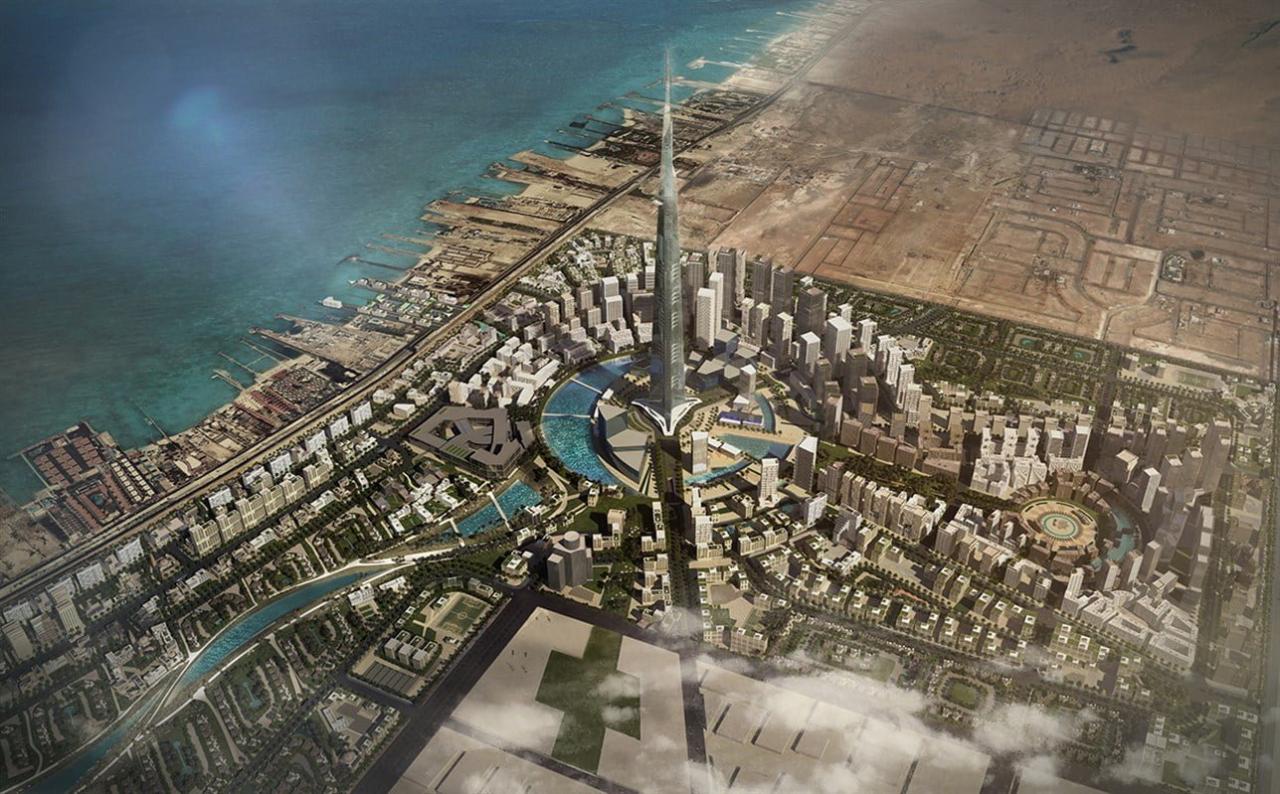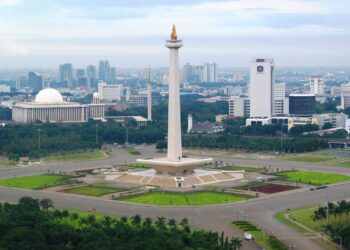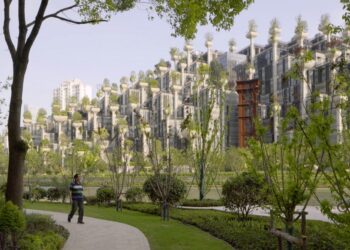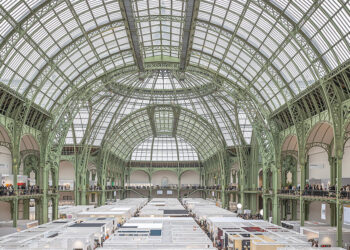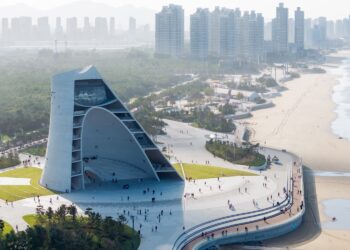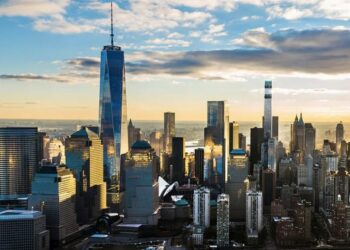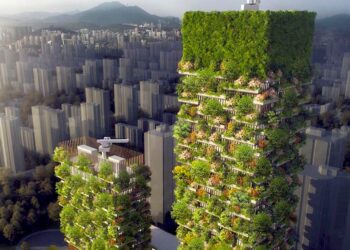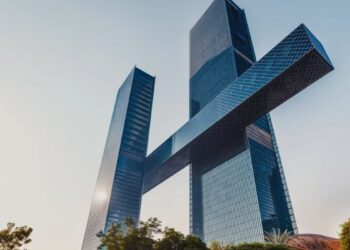The Jeddah Tower, formerly known as the Kingdom Tower, is poised to redefine the architectural skyline by becoming the tallest building globally. Located in Jeddah, Saudi Arabia, this monumental structure is a testament to the nation’s ambition and vision for the future.
A. Vision and Purpose
The inception of the Jeddah Tower is deeply rooted in Saudi Arabia’s Vision 2030, aiming to diversify the economy and reduce its dependence on oil. Spearheaded by Prince Al-Waleed bin Talal, the tower is envisioned as the centerpiece of the Jeddah Economic City project, designed to attract global business, tourism, and innovation .
B. Architectural Marvel
1. Design and Structure
Designed by Adrian Smith, the architect behind Dubai’s Burj Khalifa, the Jeddah Tower embodies neo-futuristic architecture. Its sleek, tapering form is inspired by the folded fronds of a young desert plant, symbolizing growth and prosperity .
2. Dimensions and Features
-
Height: Upon completion, the tower will soar over 1,000 meters, surpassing the Burj Khalifa by approximately 180 meters .
-
Floors: The structure will encompass 165 floors, housing a mix of residential, commercial, and hotel spaces.
-
Observation Deck: An observation deck at 664 meters will offer panoramic views, making it the highest of its kind globally .
C. Construction Journey
1. Timeline
-
Initiation: Construction commenced on April 1, 2013.
-
Hiatus: Progress halted in January 2018 due to labor issues and the broader anti-corruption purge in Saudi Arabia .
-
Resumption: After a seven-year pause, construction resumed in January 2025, with completion anticipated by 2028 .
2. Current Status
As of early 2025, 63 of the planned 157 floors have been constructed. With advancements in construction technology, each floor is expected to be completed within four days, accelerating the overall timeline .
D. Economic and Cultural Impact
1. Economic Diversification
The Jeddah Tower is more than an architectural feat; it’s a catalyst for economic diversification. By attracting international businesses and tourists, it aims to position Jeddah as a global hub for commerce and culture .
2. Cultural Significance
The tower’s design and purpose reflect Saudi Arabia’s commitment to blending tradition with modernity, symbolizing a nation poised for transformation.
E. Challenges and Criticisms
1. Financial Hurdles
The project’s estimated cost stands at $1.2 billion. Financial constraints, coupled with political factors, contributed to the prolonged construction hiatus
2. Environmental Concerns
Constructing a building of this magnitude raises environmental questions, including energy consumption and sustainability. Efforts are underway to incorporate eco-friendly technologies to mitigate these concerns.
F. Future Prospects
Upon completion, the Jeddah Tower will not only claim the title of the world’s tallest building but also serve as a beacon of innovation and progress. It is expected to host a plethora of amenities, including luxury hotels, residential apartments, office spaces, and entertainment venues, all contributing to a vibrant urban ecosystem.
G. Conclusion
The Jeddah Tower stands as a symbol of Saudi Arabia’s aspirations and commitment to shaping a diversified, forward-looking economy. As construction progresses, the world watches in anticipation, eager to witness the rise of this architectural marvel

